Total Pageviews
Friday, 9 December 2011
Dick...The Jungle Lord!
A bit of a treat again this week. The front page of The Comet (published by J. B. Allen) in 1947. Sadly, trying to get a hold of weekly issues or even a collection of scans of weekly comics/strips from this period seems to be near impossible so my thanks to "Jimpy" for this clearer version of the murky scan I have.
I think sticking with "Jungle Lord" works better than "Dick". Good to see Bibi, though -British jungle lords tended not to have many female companions.
A note. PLEASE, I know a LOT of people are visiting this site and I'd very much like to know what you think of the articles or strips posted here. Thanks.

I think sticking with "Jungle Lord" works better than "Dick". Good to see Bibi, though -British jungle lords tended not to have many female companions.
A note. PLEASE, I know a LOT of people are visiting this site and I'd very much like to know what you think of the articles or strips posted here. Thanks.

Sunday, 13 November 2011
A Mick Anglo Tribute
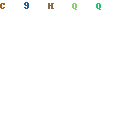 Derek has been in touch regarding an obituary for Mick Anglo:
Derek has been in touch regarding an obituary for Mick Anglo:
“An obituary has been written about Mick Anglo by a
Marvelman friend of mine, Pádraig Ó Méalóid, and he has sent me the link
to the Forbidden Planet site where he has placed it.
The link is”
It is a good tribute though I do disagree with Padraig’s final
summation of Anglo who DID influence many creators, kids and the UK
industry.
Thursday, 10 November 2011
Mick Anglo 1916-2011
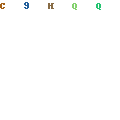
Derek has just informed me that the legendary Mick Anglo died on Oct 31st 2011, aged 96. Born on the 19th June, 1916, Maurice Anglowitz, Mick later went on to be a mainstay of the home grown British comic industry reprinting French strips in English and exporting English strips to Europe.
There can be little doubt that his most famous creation was Marvel Man –a character that replaced Fawcetts Captain Marvel reprints in his books. So much has been written about the later history, its twists and turns, and all have taken focus off of what the strip was –FUN! Hopefully he enjoyed some of the benefits of the sell off to Marvel Comics recently.
There is an interview by Derek and Roger Dicken in Alter Ego magazine #87.
Condolences go to his family.
Tempus fugit
Monday, 7 November 2011
Steve Dowling -Father Of GARTH!
STEVE DOWLING INTERVIEW
Around 1999, I had an email from the grandson of Steve Dowling who was living in Canada. I learnt that Steve had been bumped out of his job simply because he had reached 65 years of age (only in the UK!). He then spent many years living off a poor pension. Steve had no original art from his newspaper strip days to show his family -it’s why I was contacted because of my British Comic Books Archive project.
Apparently the family had asked the Daily Mirror newspaper if it could just get some photocopies of the pages for themselves. No. They asked then editor Piers Morgan (can I spit?) who basically responded that he had no time to waste of dumb comic strips (his hatred of them is well recorded).
I lost the email from the family when my old computer blew. IF Steve’s family in Canada read this then I have Garth strips I can offer on share file.
But now, the interview:

Published in ‘Ally Sloper’ #1, 1976, and reprinted in ‘Comic Bits’ #1, 2001. Denis Gifford conducts an on-stage interview at ‘Comics 101′ on 20 March 1976 with Garth creator Steve Dowling, who died in 1986.
STEVE: I might say that it’s been more than worthwhile to come all this way, because I thought nobody knew me any more, let alone thought me worthy of an award! Everybody’s been so kind to me and said so many nice things that I’ve really been rather overwhelmed by it all. Thank you very much, everyone.
DENIS: Well, we’ll get on to the British newspaper strip, which you were almost solely responsible for. You worked under several different names and different styles. How did it all start?
STEVE: It started by my going riding with a friend who did a strip called ‘Tich’ in the Daily Mirror, the ideas for which were supplied by my brother, Frank. Coming back from this event, rather full of liquor, unfortunately there was a car accident and the artist, Martin, died. And so I had to step into his shoes and was plummeted into the strip business in a rather shaky condition, having gone through the roof of a car! ‘Tich’ ran for some years. [from 1931 - DG]
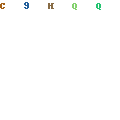
DENIS: But you were an artist before this?
STEVE: I was in advertising. As a matter of fact, I was at the time Assistant Art Director for Dorland Advertising at the age of 24. I gave up my job at Dorland’s because I could do ‘Tich’ in one day a week – there were very few lines in the thing, very slick little drawings – and then I could go down by the seaside and put my feet up for the rest of the week, which was very nice indeed!
DENIS: There were strips in the Mirror before ‘Tich’, ‘Dud’ and ‘Jinks’ and so on – but after ‘Tich’ strips seem to blossom.
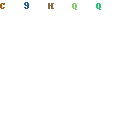
STEVE: Well, old Guy Bartholomew who was chairman of the Mirror was mad hot about strips. Having been an artist himself he regarded the strips as the main part of the paper. His opinion was that most people couldn’t read, anyway, and liked looking at pictures!
DENIS: What was the genesis of ‘Ruggles’, your first real strip?
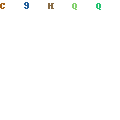
STEVE: I think having seen American continuity strips. I got the idea for this character ‘John Ruggles’, an ordinary chap, and my brother who had quite a gift for humorous writing,wrote the words. In point of fact I think ‘Ruggles’ was the first continuity strip to appear in a national daily. The others were all daily incidents. The idea of having a serial story run in picture form was new in this country, although, of course, it had been done in America. I remember Cecil King, who was rather small-fry then, always wanted me to make ‘Ruggles’ build a shed in his garden, because his 14 year-old son had suggested the idea! If I had taken King’s advice ‘Ruggles’ garden would have been so stiff with sheds that he wouldn’t have been able to move!
DENIS: Did you sit down and create ‘Ruggles’ as the average man with an average family?
STEVE: Very average! In fact we were trying to write down to the readers, a thing one should not do! Trying to make the strip as like the family life as we could. After a time my brother gave it up – he became the editor of the Picture Post instead – and I took it over. I tried to strengthen the storyline and some of the humour went out of it.
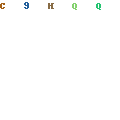 Steve Dowling receiving an Ally Sloper award from Denis Gifford and Bob Monkhouse at Comics 101
Steve Dowling receiving an Ally Sloper award from Denis Gifford and Bob Monkhouse at Comics 101
DENIS: Why did you sign it with a pseudonym: ‘Ruggles – by Blik’?
STEVE: Oh, that was just a short name like: ‘Tich – by Dart’.
DENIS: And: ‘Belinda Blue Eyes – by Gloria’?
STEVE: Oh, I was just one of a long line of Glorias! That was actually written in the first place by Bill Connor, who later became Sir William, ‘Cassandra’. He wrote it to order for Bartholomew the chairman. Everybody took a hand in those days. Basil Nicholson, the editor, who was the man who re-modelled the Mirror, his idea of having a comic strip was to have a different person every day slipping on a banana skin. One day a clergyman, the next day a policeman; he thought that was the level of public understanding.
DENIS: Later ‘Ruggles’ featured the public actually in the strip. How did that unique series come about?
STEVE: They thought the strip was flagging a bit and Philip Zec, who was then the strip editor, asked me to come up with a twist. Well, Wilfred Pickles on the radio was then ‘Meeting the People’ and I thought I would try this in strip form. I took some roughs into Zec, who didn’t think much of the idea. He took it to the chairman, and next day I got a telegram from Zec: “Please draw some more along the lines I suggested.” Well, I did, and Zec got into trouble for claiming it was his idea – it became the chairman’s idea! But I must say that the idea eventually reverted to me – when they found that the series didn’t go down very well!!
DENIS: Why did ‘Ruggles’ come to an end?
STEVE: Well, they felt it wasn’t pulling. They asked for letters and, of course, more people will write and say they don’t like a thing than those who do, so ‘Ruggles’ went.
DENIS: And so, we come, at last to Garth. How and why did he begin?
STEVE: I had been writing and drawing ‘Belinda . . .’ and not enjoying it very much. Then they found another artist, Tony Royle, to take it on, so they asked me to produce another strip in order to justify my salary. It took me about three months to think up Garth and draw the first three weeks’ strips. The chairman thought that was rather too long – so he docked my pay!
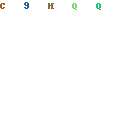
DENIS: Did you set out to create a British equivalent to ‘Superman’?
STEVE: No, ‘Terry and the Pirates’ was my great influence, if anything. I was rather interested in Tibet, and the Forbidden City, and the magic that was there. For instance, in the beginning Garth was resuscitated by the ‘kiss of life’ from a rather attractive young woman called Gala. Well, the ‘kiss of life’ was not known here then, but I had read about it in a book on Tibet.
DENIS: Garth was a man of mystery. Did you have a solution in mind from the start?
STEVE: Oh, no. I had no solution at all. I had no more idea who Garth was than the reader!
DENIS: One mystery was that Garth drifted in from the sea, and there is no sea around Tibet!
STEVE: Artistic licence!
DENIS: Another striking feature was the constantly bared bosom of one of Garth’s girlfriends.
STEVE: One had to fight to show a little in those days.
DENIS: A “little”? I’d call it a lot! I suppose the exposure was very calculated?
STEVE: Oh yes. I certainly enjoyed drawing it.
DENIS: Why did you stop drawing Garth?
STEVE: I had to. I was freelance up to 1949. Then I joined the staff to get a pension, and when I reached the age of 65 I had to go. That was the rule, so I went.
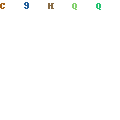 Self drawn illo for Ally Sloper Magazine
Self drawn illo for Ally Sloper Magazine
Around 1999, I had an email from the grandson of Steve Dowling who was living in Canada. I learnt that Steve had been bumped out of his job simply because he had reached 65 years of age (only in the UK!). He then spent many years living off a poor pension. Steve had no original art from his newspaper strip days to show his family -it’s why I was contacted because of my British Comic Books Archive project.
Apparently the family had asked the Daily Mirror newspaper if it could just get some photocopies of the pages for themselves. No. They asked then editor Piers Morgan (can I spit?) who basically responded that he had no time to waste of dumb comic strips (his hatred of them is well recorded).
I lost the email from the family when my old computer blew. IF Steve’s family in Canada read this then I have Garth strips I can offer on share file.
But now, the interview:

Published in ‘Ally Sloper’ #1, 1976, and reprinted in ‘Comic Bits’ #1, 2001. Denis Gifford conducts an on-stage interview at ‘Comics 101′ on 20 March 1976 with Garth creator Steve Dowling, who died in 1986.
STEVE: I might say that it’s been more than worthwhile to come all this way, because I thought nobody knew me any more, let alone thought me worthy of an award! Everybody’s been so kind to me and said so many nice things that I’ve really been rather overwhelmed by it all. Thank you very much, everyone.
DENIS: Well, we’ll get on to the British newspaper strip, which you were almost solely responsible for. You worked under several different names and different styles. How did it all start?
STEVE: It started by my going riding with a friend who did a strip called ‘Tich’ in the Daily Mirror, the ideas for which were supplied by my brother, Frank. Coming back from this event, rather full of liquor, unfortunately there was a car accident and the artist, Martin, died. And so I had to step into his shoes and was plummeted into the strip business in a rather shaky condition, having gone through the roof of a car! ‘Tich’ ran for some years. [from 1931 - DG]

DENIS: But you were an artist before this?
STEVE: I was in advertising. As a matter of fact, I was at the time Assistant Art Director for Dorland Advertising at the age of 24. I gave up my job at Dorland’s because I could do ‘Tich’ in one day a week – there were very few lines in the thing, very slick little drawings – and then I could go down by the seaside and put my feet up for the rest of the week, which was very nice indeed!
DENIS: There were strips in the Mirror before ‘Tich’, ‘Dud’ and ‘Jinks’ and so on – but after ‘Tich’ strips seem to blossom.

STEVE: Well, old Guy Bartholomew who was chairman of the Mirror was mad hot about strips. Having been an artist himself he regarded the strips as the main part of the paper. His opinion was that most people couldn’t read, anyway, and liked looking at pictures!
DENIS: What was the genesis of ‘Ruggles’, your first real strip?

STEVE: I think having seen American continuity strips. I got the idea for this character ‘John Ruggles’, an ordinary chap, and my brother who had quite a gift for humorous writing,wrote the words. In point of fact I think ‘Ruggles’ was the first continuity strip to appear in a national daily. The others were all daily incidents. The idea of having a serial story run in picture form was new in this country, although, of course, it had been done in America. I remember Cecil King, who was rather small-fry then, always wanted me to make ‘Ruggles’ build a shed in his garden, because his 14 year-old son had suggested the idea! If I had taken King’s advice ‘Ruggles’ garden would have been so stiff with sheds that he wouldn’t have been able to move!
DENIS: Did you sit down and create ‘Ruggles’ as the average man with an average family?
STEVE: Very average! In fact we were trying to write down to the readers, a thing one should not do! Trying to make the strip as like the family life as we could. After a time my brother gave it up – he became the editor of the Picture Post instead – and I took it over. I tried to strengthen the storyline and some of the humour went out of it.
 Steve Dowling receiving an Ally Sloper award from Denis Gifford and Bob Monkhouse at Comics 101
Steve Dowling receiving an Ally Sloper award from Denis Gifford and Bob Monkhouse at Comics 101DENIS: Why did you sign it with a pseudonym: ‘Ruggles – by Blik’?
STEVE: Oh, that was just a short name like: ‘Tich – by Dart’.
DENIS: And: ‘Belinda Blue Eyes – by Gloria’?
STEVE: Oh, I was just one of a long line of Glorias! That was actually written in the first place by Bill Connor, who later became Sir William, ‘Cassandra’. He wrote it to order for Bartholomew the chairman. Everybody took a hand in those days. Basil Nicholson, the editor, who was the man who re-modelled the Mirror, his idea of having a comic strip was to have a different person every day slipping on a banana skin. One day a clergyman, the next day a policeman; he thought that was the level of public understanding.
DENIS: Later ‘Ruggles’ featured the public actually in the strip. How did that unique series come about?
STEVE: They thought the strip was flagging a bit and Philip Zec, who was then the strip editor, asked me to come up with a twist. Well, Wilfred Pickles on the radio was then ‘Meeting the People’ and I thought I would try this in strip form. I took some roughs into Zec, who didn’t think much of the idea. He took it to the chairman, and next day I got a telegram from Zec: “Please draw some more along the lines I suggested.” Well, I did, and Zec got into trouble for claiming it was his idea – it became the chairman’s idea! But I must say that the idea eventually reverted to me – when they found that the series didn’t go down very well!!
DENIS: Why did ‘Ruggles’ come to an end?
STEVE: Well, they felt it wasn’t pulling. They asked for letters and, of course, more people will write and say they don’t like a thing than those who do, so ‘Ruggles’ went.
DENIS: And so, we come, at last to Garth. How and why did he begin?
STEVE: I had been writing and drawing ‘Belinda . . .’ and not enjoying it very much. Then they found another artist, Tony Royle, to take it on, so they asked me to produce another strip in order to justify my salary. It took me about three months to think up Garth and draw the first three weeks’ strips. The chairman thought that was rather too long – so he docked my pay!

DENIS: Did you set out to create a British equivalent to ‘Superman’?
STEVE: No, ‘Terry and the Pirates’ was my great influence, if anything. I was rather interested in Tibet, and the Forbidden City, and the magic that was there. For instance, in the beginning Garth was resuscitated by the ‘kiss of life’ from a rather attractive young woman called Gala. Well, the ‘kiss of life’ was not known here then, but I had read about it in a book on Tibet.
DENIS: Garth was a man of mystery. Did you have a solution in mind from the start?
STEVE: Oh, no. I had no solution at all. I had no more idea who Garth was than the reader!
DENIS: One mystery was that Garth drifted in from the sea, and there is no sea around Tibet!
STEVE: Artistic licence!
DENIS: Another striking feature was the constantly bared bosom of one of Garth’s girlfriends.
STEVE: One had to fight to show a little in those days.
DENIS: A “little”? I’d call it a lot! I suppose the exposure was very calculated?
STEVE: Oh yes. I certainly enjoyed drawing it.
DENIS: Why did you stop drawing Garth?
STEVE: I had to. I was freelance up to 1949. Then I joined the staff to get a pension, and when I reached the age of 65 I had to go. That was the rule, so I went.
 Self drawn illo for Ally Sloper Magazine
Self drawn illo for Ally Sloper MagazineSunday, 6 November 2011
If You Wonder WHO Cast Iron Chris Is You'll Ask WHAT Is The Iron Boy!!
When I first came across The Iron boy I chuckled.
However, as you do when you get older, I then started questioning the
very concept.
The character is, of course, another one of those oddities
from the Swan Comics stable. What do we know?
Who was the artist?
No idea. Again, that old problem of not signing work. Whoever it was he
kept forgetting the ‘arms’ of the spectacles.
What is really needed are samples of strips that are signed and have
this distinctive style. Good luck with
that!
We know the series was contemporary so 1940s to early
1950s. However, take a look at how this
Swan marvel is dressed. Almost girlish
–almost medieval page boy but he is wandering around with no hassles. Well, no hassles until it comes to metal.
You see, Tim –yes, The Iron Boy has a name!- was “Bred on a
diet of tintacks and iron filings Tim was almost solid metal!”
WHAAAT??!!
Okay, we’re back to that “suspension of disbelief”
here. Oh, like soggy pancakes I am! Can you imagine a comic strip being published
today in The Beano or The Dandy about a boy eating tin-tacks
and metal filings?? National newspaper
and TV outrage fuelled by some “concerned parent” (who probably feeds his/her
kids on too much pizza and sweet food).
Who was it looking after Tim? Well, we know he has an uncle. He says so and reveals that this uncle only
left him with steel flakes, nuts and bolt ‘salad’! In the strips reprinted in
Black Tower Gold 6 Tim eats iron bars from a zoo cage, a roadworkers steel
drill, suits of medieval armour –this just isn’t human! But then, let’s look at some of his exploits.
He eats the iron bars from a tigers cage and the tiger bites
into Tim’s head –and breaks teeth.
He can walk through solid brick walls and not notice. He can dig a road up with a pick-axe at
incredible speed.
He can fall from an aeroplane and land on an elephant and
bruise it –he can also survive being thrown a distance by said elephant and
land and knock out two full-grown lions!
In the death grasp of a python he can stretch and break free
–tearing the python into three pieces!
Were Tim’s adventures after being dropped into Africa continued?
Anyone remember who was the fifteenth member to join DC
comics Legion of Super Heroes in the 30th century? Matter-Eater Lad
who can eat and digest any substance without harm to himself. Could it be….?
No, obviously not. Besides, Tim
eats metal almost exclusively.
So, if he eats metal it must be
used up for energy, right? Certainly he
is strong beyond the simple explanation of “being almost solid metal.” Now, okay, he digests and burns up the metal
for energy but there is a bi-product of eating that I need to delicately touch
upon.
“Number twos”, “pooping”, “Potty
crocodiles”…I could go on but I hope you get my meaning? 1940s plumbing being filled with “metallic
waste” is not a good combination. That
said, in the period concerned you would never ever refer to “matters of the
toilet” so it wasn’t a problem back then.
But today, oh we want an explanation.
Right, he does not produce “waste”.
In fact, for the character’s
upcoming modern appearances I solve all these questions. The answer lies with one of Black Towers
oldest characters. “Who?” you ask. Well,
you’ll have to wait and see!
For all the disregard Gerald
Swan later showed to his comics, his line of books and creators came up with
some great oddities and The Iron Boy ranks amongst the top ten…closely followed
by Ingy
Roob!
Scans used with this article are lower quality than those in publications
Saturday, 5 November 2011
Who On Earth Is “Cast Iron Chris”??
That’s what I tend to ask. You see, this character, like many others,
never had any sort of origin tale that I know of. The Iron Boy is weird enough, but more
about him another time. These were just
strips drawn to fill pages for a few shillings by creators who didn’t have the luxury
of expanding beyond one page with sometimes nine panels.
To all intents and purposes, Cast Iron Chris is a British
superman but without a costume and more in the mold of other characters such
as Desperate Dan –one wonders whether that might have been the
intention? John “Jock” McCail seemed to
be a mainstay of Gerald Swan’s line of Swan Comics (Ah Wong, Dene Vernon, etc.) and drew
at least one Cast Iron Chris strip that I know of.
We do not even know who it was that created the
character. This was all “throw-away” entertainment after all and few creators
chose to sign their work from choice. We
do know that in Slick Fun No. 22 (1945), McCail depicts Chris
getting into a battleships 20 inch guns and falls asleep –he is fired into a
German naval vessels and his impact sinks it.
That’s pretty good invulnerability.
But there is more. In
Black Tower Gold (volume 4) I reprinted another Cast Iron Chris
strip (it was sent to me with no issue credits I believe it is from the Slick Fun Album,1950). In the opening panel Chris is having a letter “C”
tattooed onto his chest…using a pneumatic drill as opposed to a tattooist
needle! He then loses a book down an
open manhole cover where there is a gas leak –striking a match to find the book
in the dark, Chris is blown hundreds of feet into the air. He goes through the cockpit floor of an
aircraft and jumps back down to earth carrying the pilot.

Now, if that ain’t super human then I have no idea what is!
This is certainly not John McCail’s art style. Unfortunately, a lot of artists were still
using the Tom Browne Style so it could be any one of a number working for Swan.
McCail’s style was more “straight”.
One can use one’s imagination to work out an “origin” but,
honestly, the reader being a youngster, was supposed to just accept it all –a suspension
of disbelief as it were. And that’s how it was supposed to be.
I have used Cast Iron Chris in a Black Tower
strip but not to any great extent. In
2012 he will be back and then I may have to make up an origin!
Thursday, 27 October 2011
William [Bill/Billy] McCail 31st March,1902 –12th August 1974
William McCail was born in West Hartlepool and his father was,unsurprisingly for that period,a shipyard worker and William initially found a job at the shipyard as well. However,an unfortunate [or fortunate?] accident allowed him to pursue an artistic career. He went on to become a staff illustrator for D.C. Thomson in Dundee,[publishers of The Beano and Dandy,of course] where he worked in the art department of The Courier,coincidentally,his artist brother John had worked there before him.
McCail provided art for all types of magazines including Boys Papers such as Rover, Adventure and Wizard also the women's story papers Red Letter, Weekly Welcome and Women’s Companion. Anyone interested in British Golden Age comics or illustrated papers will know he was the regular artist of the 'Dixon Hawke' detective stories in Sporting Post.
Unfortunately,Thomson was a very conservative company. You got paid a,uh,’fair amount’ for your work and you were expected to doff your cap and humbly get back to work on the next set [strip]. William was guilty of “politicking” -unforgiveable back then- and so left Thomson.
In 1940,William moved to London aiming to work as a freelance artist and together with his brother started work with publisher Gerald Swan that lasted a number of years —Back From The Dead is probably his most famous work though he also produced “Headline Henderson”,”Calling All Cars”,”Red Martin” and the pirate adventure “Old Hooky” and many others.
Although his stories seemed to be a little what Denis Gifford termed “slap-dash”,they were well plotted and paced and William was very popular amongst the readers of Swan Comics. At least with Swan he was told how readers appreciated his work. Also,he had no problems with what we might call creators rights at Swan.
Back From The Dead featured in War Comics[1940],Topical Funnies [1941] and,along with help from brother John,the whole story was compiled into a 52 pages long Picture
Epics No.1 –along with that famous cover!
Back in Dundee,in 1944,William set up Livingstone Studios” which was later re-named “Strathmore Studios”. Curiously,he specialised in drawing horses and was exhibited at the Royal Scottish Academy.
In 1962,William McCail retired.
For a long time I looked for a clear,crispy copy of Back From The Dead but,apparently,the printing of the time was a little low on quality [pay cheap you get cheap]. So,here is the best copy I have found to date.
Enjoy!
Wednesday, 26 October 2011
Defining The British Ages Of Comics
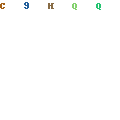
Despite attempting to fill in the Lost Era of British comics from the 1940s/1950s since the 1980s it is only recently,with the invaluable help of Dennis Ray,owner of The 3-Ds comic store in Arlington,Texas,that a small chunk of this period has been rediscovered.
Characters not listed even in Denis Gifford references have been found. These have started to appear in the Black Tower Golden Age Classics series. As they are unlikely to be big money earners the cover prices were kept low for those interested in the subject.
Here is a slightly up-dated version of my article defining the British ages of comics from my British Golden Age Comics web site and a couple years back on CBO.
The late Denis Gifford spent many decades chronicling the history of British comics. It was a never-ending task and at least we still have his books to rely on –these have been so plagiarised by new ‘experts’ that it shows just how valuable any Gifford book is. For this reason,I am relying solely on Denis’s and the “Tel’s From The Crypt” feature from vol.1 no.1 of COMIC BITS [1999].
Of course,there are some who would argue that comic strips go back further than the dates I give. This is debatable and,hopefully,one day theUK will have a symposium on the subject! In the meantime,if you want to learn more there is an excellent and highly recommended site worth visiting
You will find some great treats there! According to Denis,the first comic magazine was actually titled…The Comick Magazine! The magazine appeared on 1st April,1796. The publisher was Mr Harrison of 18 Paternoster Row,London who describe the title as “The compleat Library of Mirth,Humour,Wit,Gaiety and Entertainment”.
Most purists would argue that The Comick Magazine was wholly text,however,it did come “enriched with William Hogarth’s Celebrated Humorous,Comical and Moral Prints”. –one per monthly issue! These prints formed the series “Industry and Idleness” and when put together in their “narrative sequence”,argued Gifford,”they could be described as an early form of omic strip” –again,check out Andy’s Early Comics.
Thomas Rowlandson provided plates for The Caricature Magazine [1808]. On the 1st May,1809 came The Poetical Magazine and it was in this –Rowlandson the artist once more—that what is arguably the first British ‘comic’ super star was born:Dr Syntax! The serial by William Combe,”The Schoolmaster’s Tour” was Dr Syntax’s first,uh,outing and in 1812 was reprinted in book form [graphic novel?] as “The Tour Of Dr Syntax in Search of The Picturesque”. This featured 31coloured plates.
Dr Syntax spawned merchandise spin offs,as any comic star does,such as Syntax hats,coats and wigs!!
Inspired by the French funny paper Figaro,on 10th December,1831,the four page weekly Figaro In London appeared. Cover and interior cartoons were by Robert Seymour. This first funny weekly went on for eight years and was to inspire [imitation] spin-offs such as Figaro In Liverpool and Figaro In Sheffield. We can see the future shape of the comic industry appearing here!
Punch In London appeared on 14th January,1832 –this weekly lasted 17 issues and the last featured 17 cartoons!
The longest lived comic magazine,of course,was Punch from 17th July,1841 until its demise in 2002! It is a fact that Punch,on 1st July,1843,introduced the word “cartoon” into the English language;on that date the magazine announced the publication of “several exquisite designs to be called Punch’s Cartoons”. Two weeks later the first appeared,the artist being John Leech. [for more info on Punch see http://www.punch.co.uk/]
Leech also drew “The Pleasures Of Housekeeping” [28th April,1849] –described as a slap-stick strip aboutr a suburbanite called Mr Briggs which,ten years later,was published in book form as Pictures Of Life And Quality.
In 1905 Mr Briggs was still being reprinted in six penny paperbacks.
Judy~The London Serio-Comic Journal started on 1st May,1867 and,on 14th August of the same year introduced a character who became one of the greatest comic heroes of the day…….Ally Sloper!
Ally Sloper [so called because,when a debt collector turned up he Sloped off down the Alley!] was a bald headed,bulbous nosed figure with a rather battered hat. ..often described as a Mr Micawber type [as played by W.C.Fields and others over the years]. Ally was constantly trying to make money but more often than not never quite succeeded.
Merchandise abounded,Sloper Pewter mugs,figurines,bottles and much,much more. And you can learn a great deal more on a wonderful web site –
http://www.imageandnarrative.be/graphicnovel/rogersabin.htm
There was an Ally Sloper comic in 1948 and some might think that was it. However,Walter Bell drew the old lad in Ally Sloper,a British comics magazine published by Denis and Alan Class in the 1970s and soon to reappear in Ally Sloper’s Comic Bits [successor to Comic Bits].
Ally has certainly lived longer than his creator,Charles Henry Ross,could probably ever have imagined!
Into the 20th Century and there was the rise of many illustrated text stories and comic strips with text under each panel.
D.C. Thomson had titles like ADVENTURE and ROVER. Alfred Harmsworth’s,and later his Amalgamated Press’, COMIC CUTS was the first comic though. Issue 1 was published on 17th May,1890 and the final issue was published on 12th September,1953 with issue number 3006!
But the 1930s saw a virtual explosion in comics from small publishers outside London. These included Merry Midget,no.1 dated Saturday,12th September,1931 and published by Provincial Comics Ltd.,
Bath –and the other title from this publisher was Sparkler. Also publishing from Bath were Target Publications who produced Rattler and Target.
Now these were traditional humour strips and gags along with text adventure stories. But in 1939 something happened that ended the Diamond Age and saw the beginning of the Golden Age.
On the 8th July,1939,the Amalgamated Press published,in Triumph,the strip “Derickson dene”,drawn by that mysterious comic great Nat Brand. Gifford described the strip as “a four page serial strip that established him [Dene] as the first British super hero in the American comic book style”.
And then,on the 5th August,1939,in Triumph no.772,compilations of the Siegel and Shuster Superman newspaper strips started. On the front cover,flying through space and drawn by John “Jock” McCail was The Man of Steel.
These two very significant strips,in my opinion,ushered in the British Golden Age.
There was only one little problem. Across the English [or French] Channel,a little twerp with a silly moustache started a “bit of a tiff” we know as World War Two. Paper restrictions and the banning of imported goods such as comic books,meant that British publishers had to use whatever they could. Comics were printed on brown wrapping paper,silver paper[!] and other inferior stocks. Many comics simply vanished. No new ongoing titles could be published so smaller publishers began to issue one-off eight pagers.
The best known publishers remembered today are the Amalgamated Press and D.C.Thomson,at the latter not just Lord Snooty and his Gang but also Eggo and Desperate Dan took on the Germans.
But Gerald G. Swann deserves a mention for books such as War Comics,Topical Funnies Special Autumn Number,Thrill Comics,and Slick Fun. . Swann gave us Krakos the Egyptian and Robert Lovett:Back From The Dead.
A.Soloway produced All Fun and after the war Comic Capers[1942] and Halcon Comics[1948]. R & L Locker published Reel Comics and Cyclone Illustrated Comic. Newton Wickham published Four Aces and Martin & Reid produced Grand Adventure Comics.
Gifford himself,later to work on Marvelman,produced Mr Muscle. Cartoon Art Productions of Glasgow published Super Duper Comics [1948]. W. Daly gave us Crasho Comic [1947]. Cardal Publishing of Manchester gave us the Gifford drawn Streamline Comics [1947]……..
There were so many publishers and titles and these titles included Ally Sloper,Ensign Comic,Speed Gale Comics,Whizzer Comics,Super Duper,The Three Star Adventures,The Atom,Prang Comic,Marsman Comic,Big win comic,Big Flame Wonder Comic,Evil Eye Thriller,The Forgers and many,many more –super heroes,science fiction,humour,detective,war comics the lot.
However, there was soon to be a revolution. Publishers started declining and the big companies continued on. Then,on 14th April,1950, ”launching British comics into the new Elizabethan Age,and the Space Age” appeared The Eagle,starring Dan Dare. This date can be seen as the start of the Silver Age of British comics.
New characters would appear who would engrave themselves on the new generations of comic readers.
In the Amalgamated Press’ Lion no.1,23rd February,1952 Robot Archie made his debut. In 1953,rivals D. C. Thomson featured General Jumbo in The Beano. Miller,of course,brought us Marvelman and his family of comics.
More uniquely British characters followed and into the 1960s we saw “The House of Dollman”,”The Spider”,”Steel Claw”,”Rubberman” appear.
In the mid –to- late 1970s titles began to get cancelled more and more frequently with Thomson and Fleetway/IPC seemingly not sure just where they were going comic –wise.In February,1977,2000 AD made its debut and it was a pivotal point for British comics [not to mention for the US industry which later recruited many of the talents involved to help its rapidly sinking comics in the mid-1980s. And though some comics continued few survived. Beano and Dandy continue but British comics as an industry seem almost dead.
From all of this we can define the ages of British comics.
The Platignum Age ~ 1796-1938
The Golden Age ~ 1939-1949
The Silver Age ~ 1950-1976
The Modern [Bronze Age] ~ 1977—–
And there you have it;a brief break-down and definition of the Ages. of British comics.
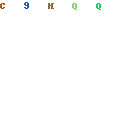
Subscribe to:
Posts (Atom)

















